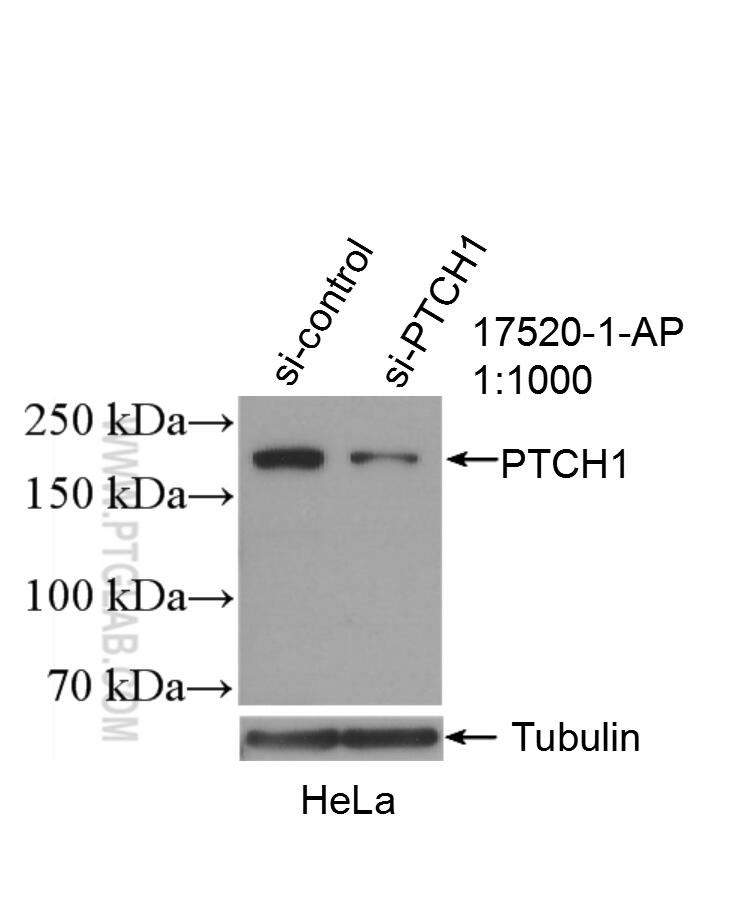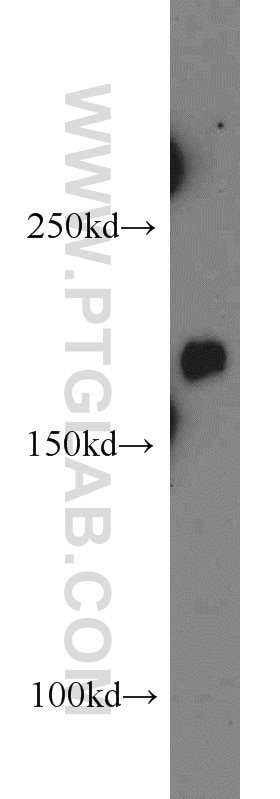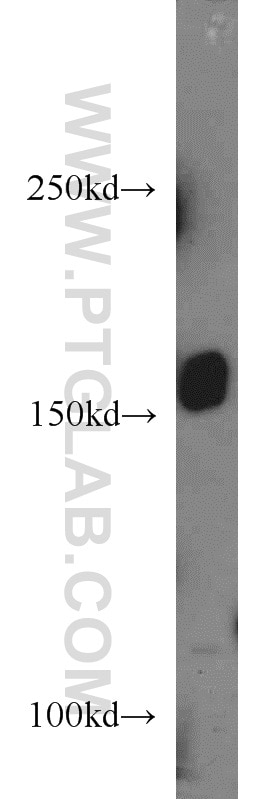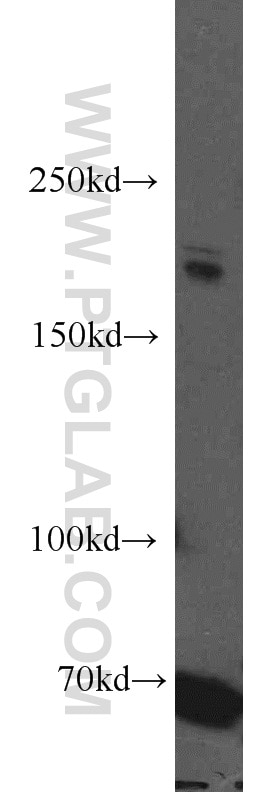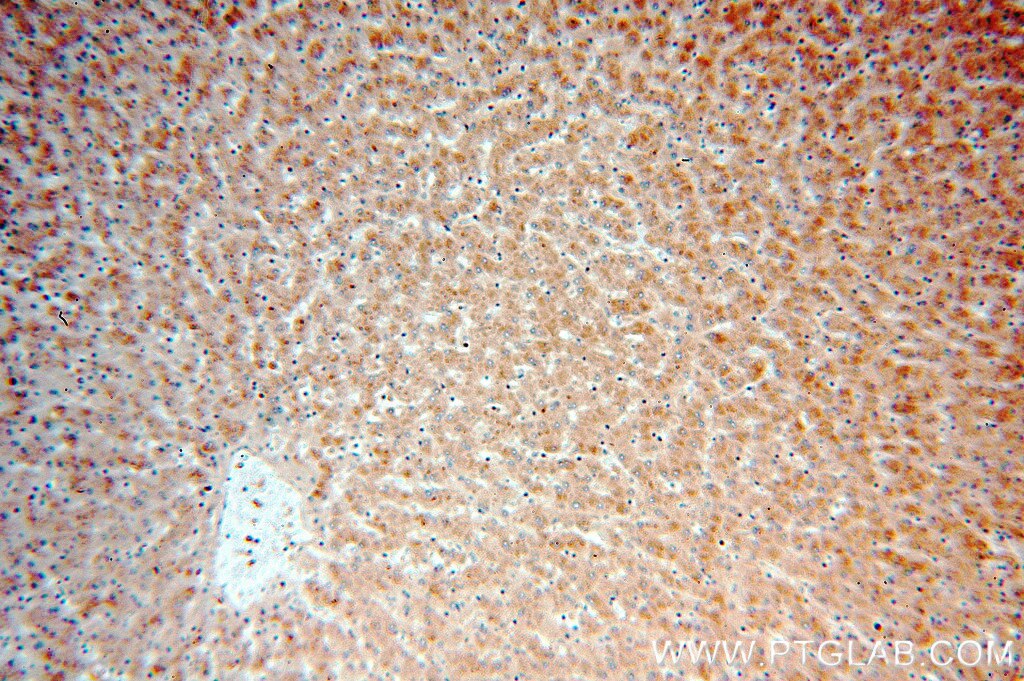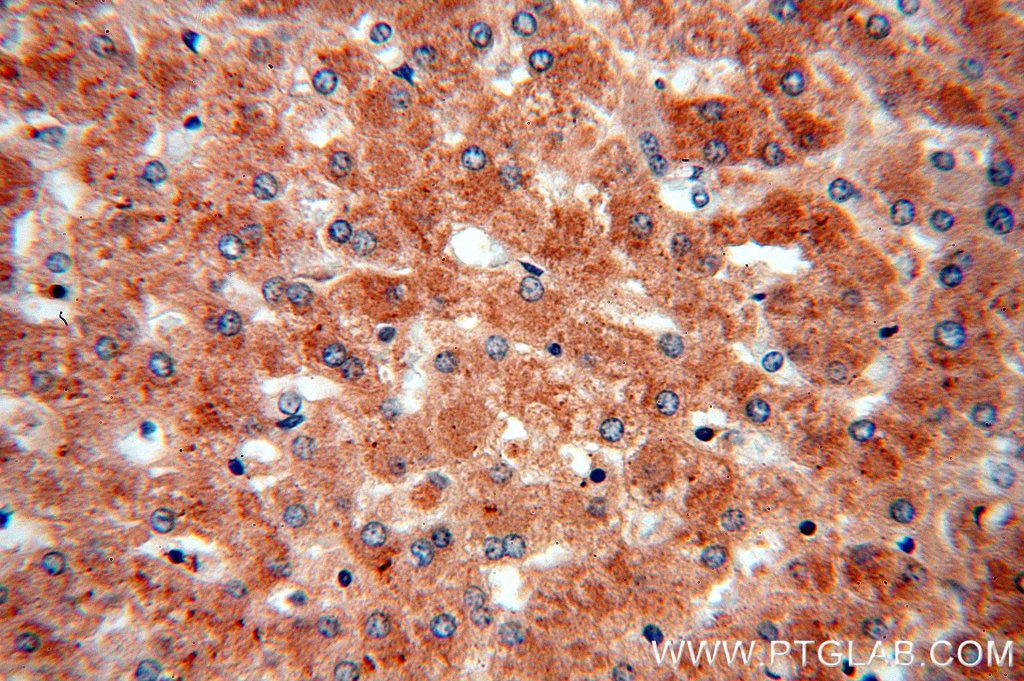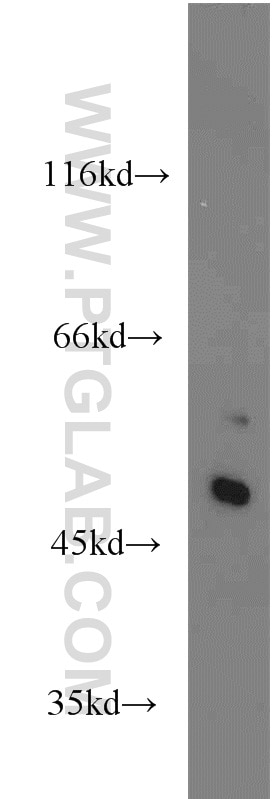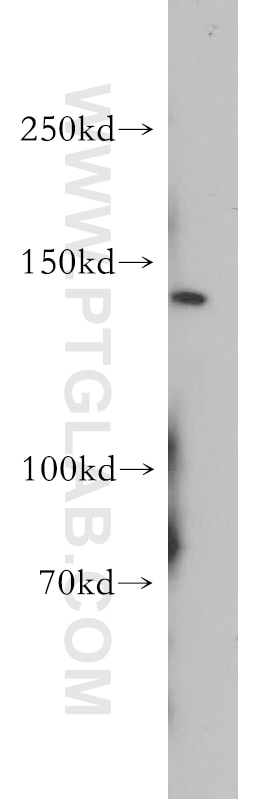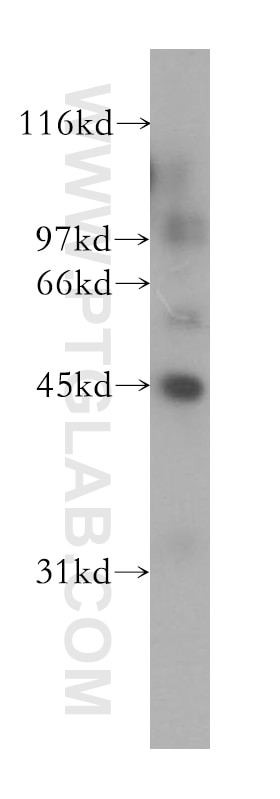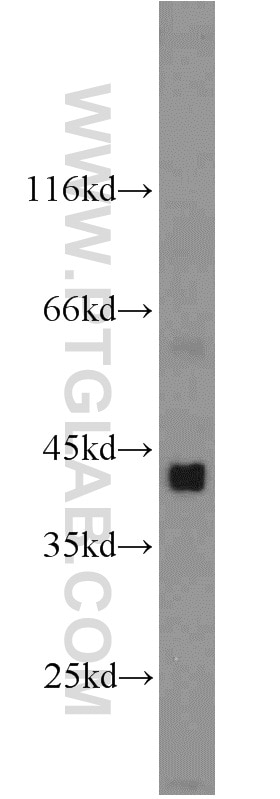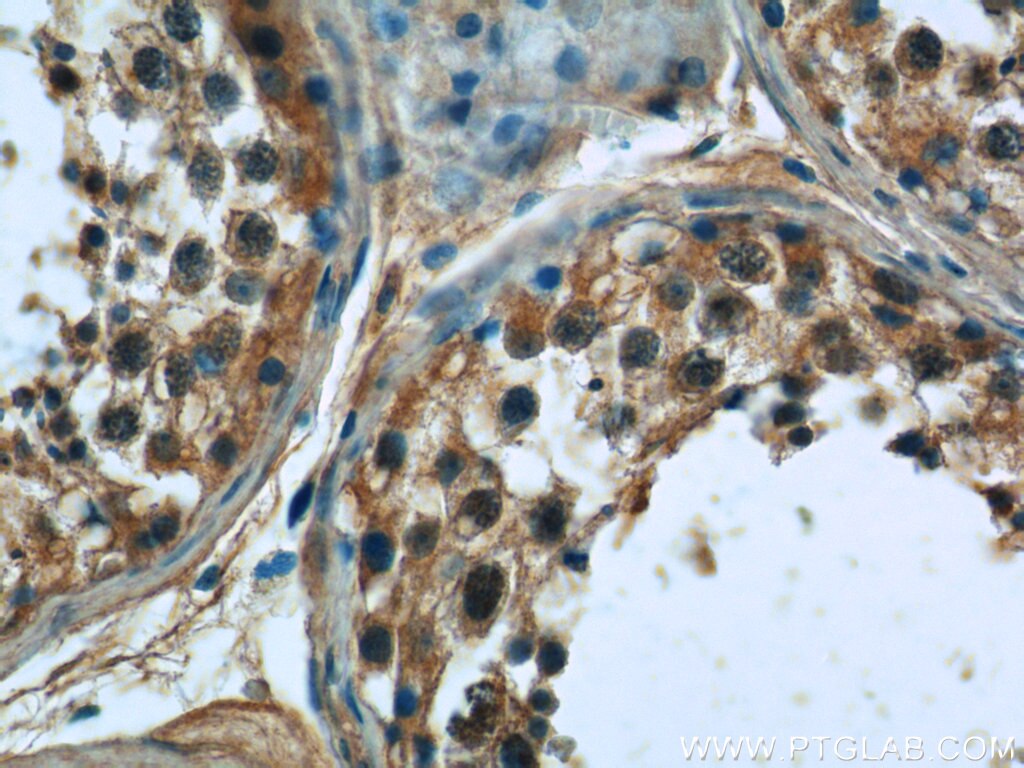- Featured Product
- KD/KO Validated
PTCH1 Polyclonal antibody
PTCH1 Polyclonal Antibody for WB, IHC, ELISA
Host / Isotype
Rabbit / IgG
Reactivity
human, mouse and More (1)
Applications
WB, IF, IHC, ELISA
Conjugate
Unconjugated
Cat no : 17520-1-AP
Synonyms
Validation Data Gallery
Tested Applications
| Positive WB detected in | mouse brain tissue, A431 cells, HeLa cells |
| Positive IHC detected in | human liver tissue Note: suggested antigen retrieval with TE buffer pH 9.0; (*) Alternatively, antigen retrieval may be performed with citrate buffer pH 6.0 |
Recommended dilution
| Application | Dilution |
|---|---|
| Western Blot (WB) | WB : 1:500-1:1000 |
| Immunohistochemistry (IHC) | IHC : 1:50-1:200 |
| It is recommended that this reagent should be titrated in each testing system to obtain optimal results. | |
| Sample-dependent, Check data in validation data gallery. | |
Published Applications
| WB | See 21 publications below |
| IHC | See 5 publications below |
| IF | See 1 publications below |
Product Information
17520-1-AP targets PTCH1 in WB, IF, IHC, ELISA applications and shows reactivity with human, mouse samples.
| Tested Reactivity | human, mouse |
| Cited Reactivity | human, rat, mouse |
| Host / Isotype | Rabbit / IgG |
| Class | Polyclonal |
| Type | Antibody |
| Immunogen | Peptide 相同性解析による交差性が予測される生物種 |
| Full Name | patched homolog 1 (Drosophila) |
| Calculated molecular weight | 161 kDa |
| Observed molecular weight | 161 kDa |
| GenBank accession number | NM_000264 |
| Gene symbol | PTCH1 |
| Gene ID (NCBI) | 5727 |
| Conjugate | Unconjugated |
| Form | Liquid |
| Purification Method | Antigen affinity purification |
| Storage Buffer | PBS with 0.02% sodium azide and 50% glycerol pH 7.3. |
| Storage Conditions | Store at -20°C. Stable for one year after shipment. Aliquoting is unnecessary for -20oC storage. |
Background Information
PTCH1 (patched homolog 1) is a twelve-pass transmembrane protein that acts as a receptor of Hedgehog signaling pathway (PMID: 8906794). Hedgehog pathway plays a critical role in embryonic development and tissue homeostasis, and its dysregulation has been implicated in many human diseases including congenital disorder and cancer (PMID: 23719536; 23532857). In the absence of Hedgehog proteins (SHH, IHH and DHH in humans), PTCH1 represses the activity of Smoothened (SMO). Binding of Hedgehog proteins to PTCH1 inhibits the repression of SMO, resulting in the activation of downstream targets through the Gli transcriptional effectors (PMID: 23719536; 17139287). The gene of PTCH1 is considered to be a tumor suppressor gene. Mutations of this gene have been associated with basal cell nevus syndrome, esophageal squamous cell carcinoma, trichoepitheliomas, transitional cell carcinomas of the bladder, as well as holoprosencephaly.
Protocols
| Product Specific Protocols | |
|---|---|
| WB protocol for PTCH1 antibody 17520-1-AP | Download protocol |
| IHC protocol for PTCH1 antibody 17520-1-AP | Download protocol |
| Standard Protocols | |
|---|---|
| Click here to view our Standard Protocols |
Publications
| Species | Application | Title |
|---|---|---|
Nat Commun TSPAN8 promotes cancer cell stemness via activation of sonic Hedgehog signaling. | ||
Nat Commun mTORC1 regulates PTHrP to coordinate chondrocyte growth, proliferation and differentiation. | ||
Am J Hum Genet Genomic analyses reveal mutational signatures and frequently altered genes in esophageal squamous cell carcinoma. | ||
Elife Activation of Hedgehog signaling in mesenchymal stem cells induces cartilage and bone tumor formation via Wnt/β-Catenin. | ||
J Mol Cell Biol Sequential stabilization of RNF220 by RLIM and ZC4H2 during cerebellum development and Shh-group medulloblastoma progression. | ||
Cancers (Basel) RNA-seq and ChIP-seq Identification of Unique and Overlapping Targets of GLI Transcription Factors in Melanoma Cell Lines |
Reviews
The reviews below have been submitted by verified Proteintech customers who received an incentive forproviding their feedback.
FH Charlotte (Verified Customer) (07-27-2022) | 1/2 : WT starved and then ShhN stimulated. 3/4 : Ptch1 KO cells starved and then ShhN stimulated. It should be between the uppermost band and the following one from the ladder but we can conclude that there is nothing and the antibody is really dirty
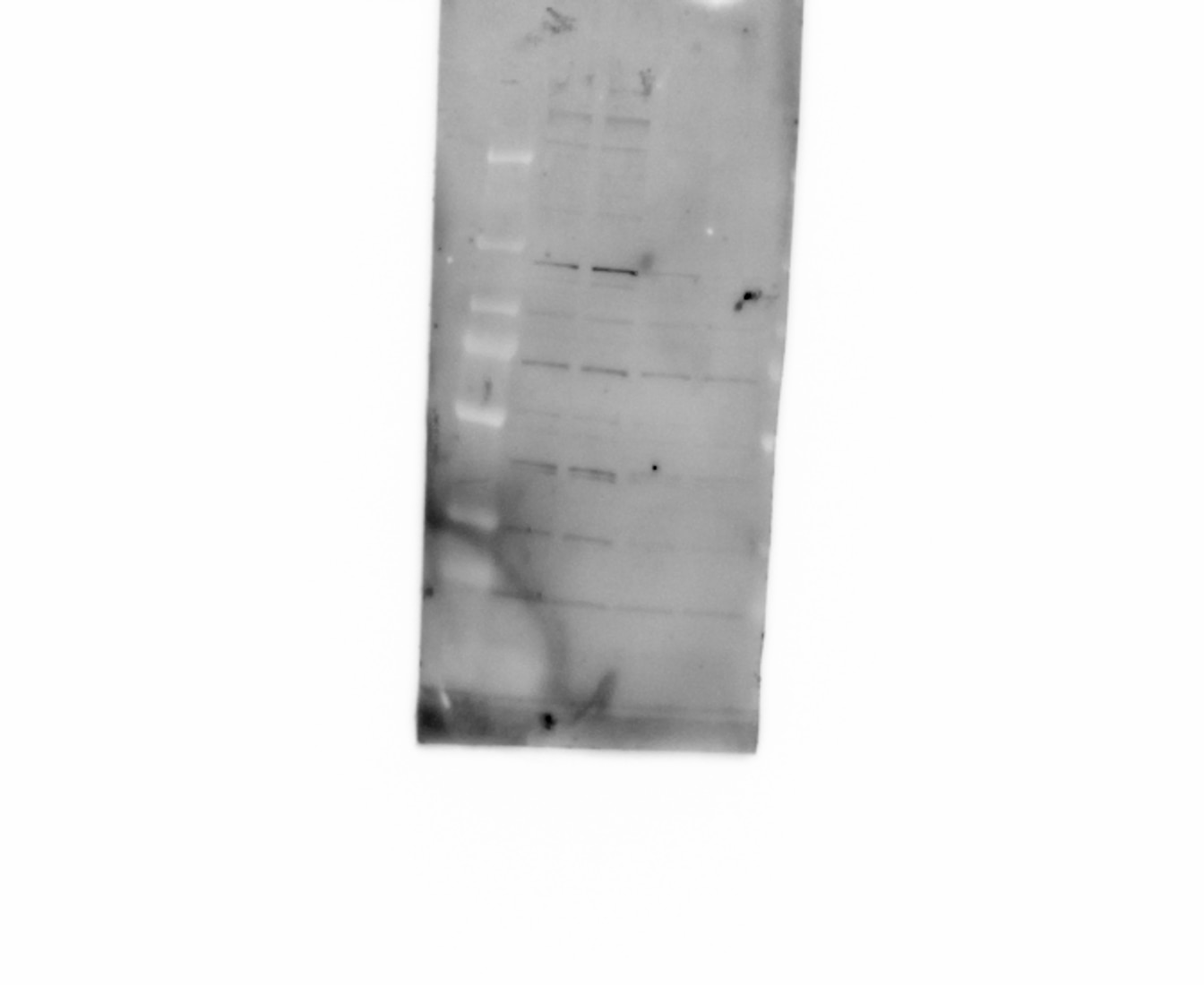 |
FH Boyan (Verified Customer) (04-04-2019) | The band at around 200 KD is not the true band of Ptc1, because this band cannot be increased by treating the cells with Shh ligand, and did not disappear in Ptc1 KO cells. As positive controls, Gli1 was induced by treating the cells with the Shh ligand.
|
FH Juan Pablo (Verified Customer) (11-29-2018) | I see a band around 200kDa kind of clean. Never detected the 149kDa shown in proteintech website.
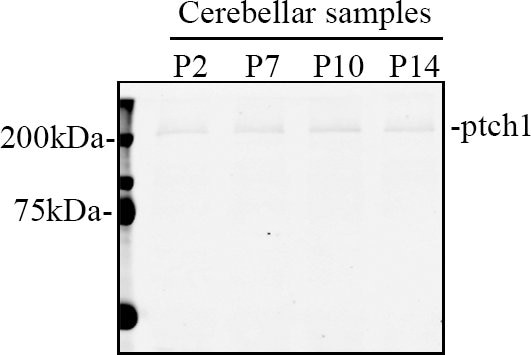 |
